Most people are still underestimating Solana. Isn't that a good thing?
Written by: FLOW
Translated by: Tim, PANews
Since the end of January, the crypto market has been in a downward trend, mainly influenced by macro uncertainty and weak sentiment. However, recently we have observed a new wave of upward momentum in the market.
Although we are still in the early stages, various signs indicate that we may be at a turning point in the development of cryptocurrencies. This trend inspired me to write a piece about the current state of the Solana ecosystem.
For me, Solana remains one of the most powerful Layer 1 blockchains in the market. It is the fastest-growing ecosystem in the crypto space and one of the few public chains that truly has a natural growth advantage, even surpassing Ethereum in many on-chain metrics.
Without further ado, let's get started.
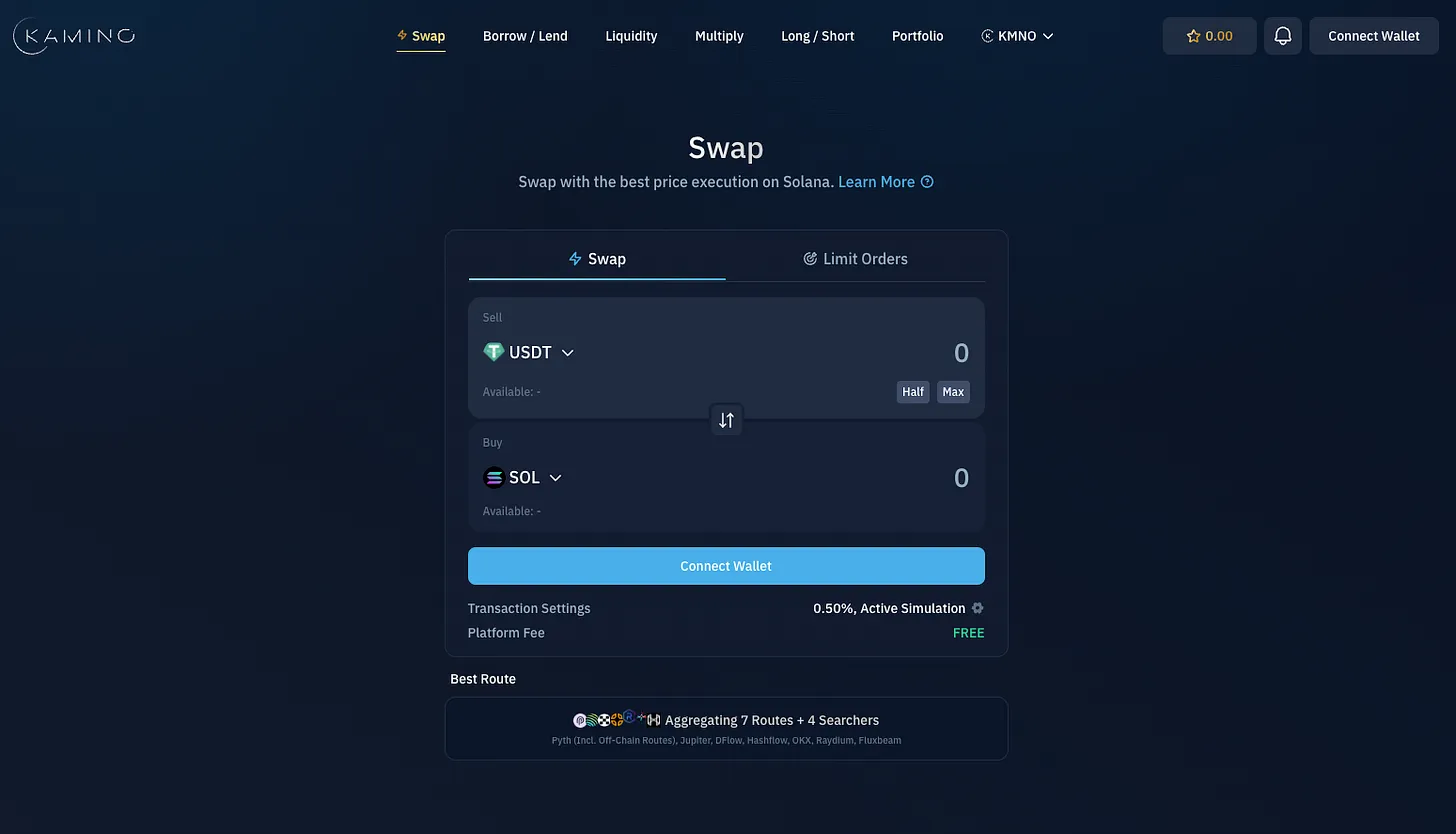
The following topics will be discussed:
Network Status
On-chain Activity
Ecosystem
SOL Price Analysis
Solana Network Status
When we start the analysis, let's set aside price factors for now and focus on the fundamentals. It is worth noting that Solana, as a blockchain network, seems to be in the strongest development phase in its history.
Solana Network Stability
In its early stages, Solana faced much criticism due to network interruptions and instability issues. However, that seems to be a thing of the past. Since February 2024, the network has not experienced a single interruption.
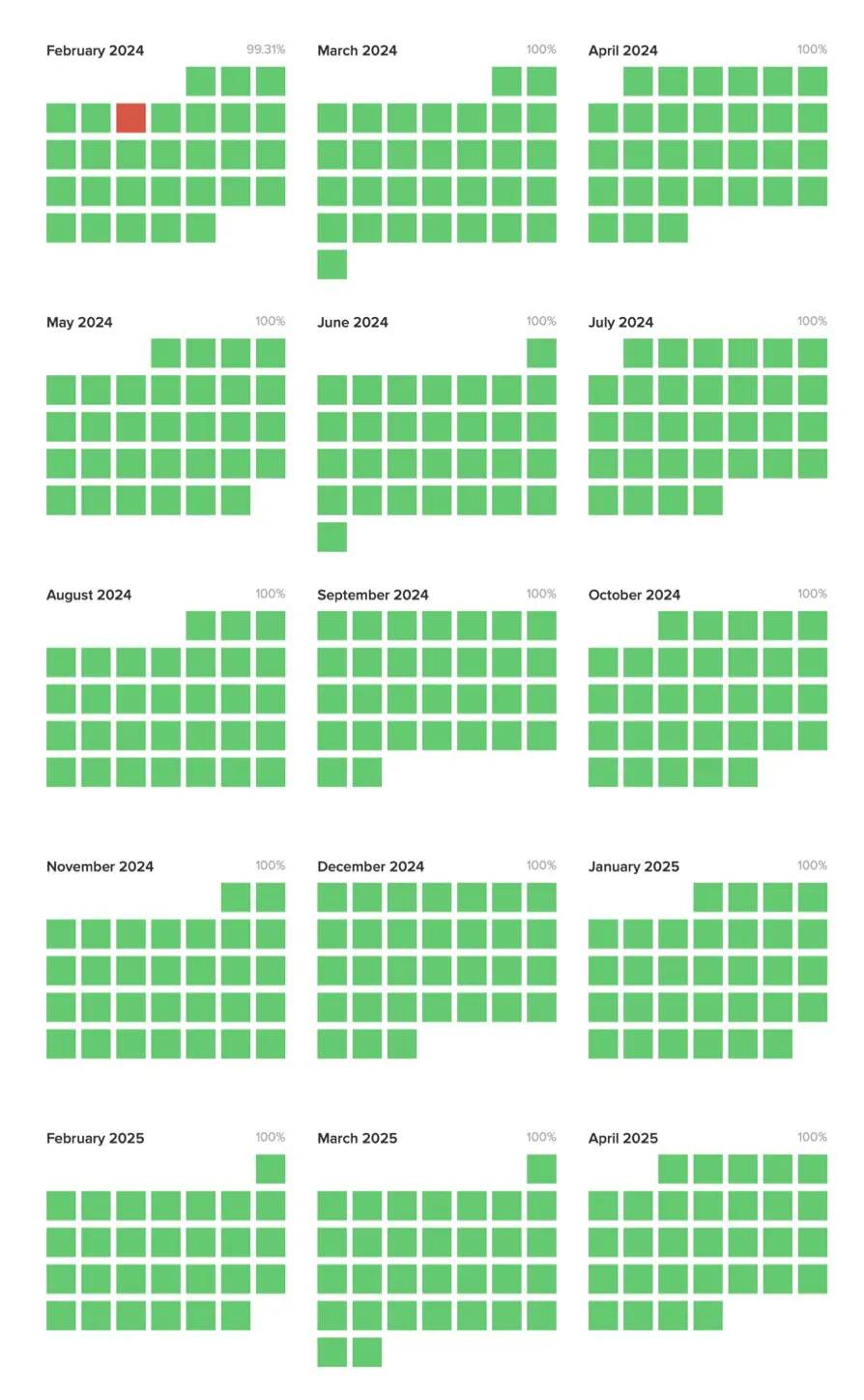
The Lindy effect is a powerful force in the crypto space; it is an important indicator of trust and reliability. I believe this is a key reason why Ethereum has garnered favor from large institutions: since its mainnet launch in 2015, the network has maintained a record of zero total network downtime.
Although Solana still falls slightly short in this regard, its data performance is encouraging. As uptime increases, trust and reliability also improve, which is crucial.
Degree of Decentralization
Decentralization is a guiding principle of blockchain, distributing power and decision-making among various nodes, which gives the network resilience. A simple metric to measure the degree of decentralization is the Nakamoto coefficient, where a higher value indicates a more decentralized system. According to the latest data from CoinTelegraph, Solana stands out with a Nakamoto coefficient of 21.
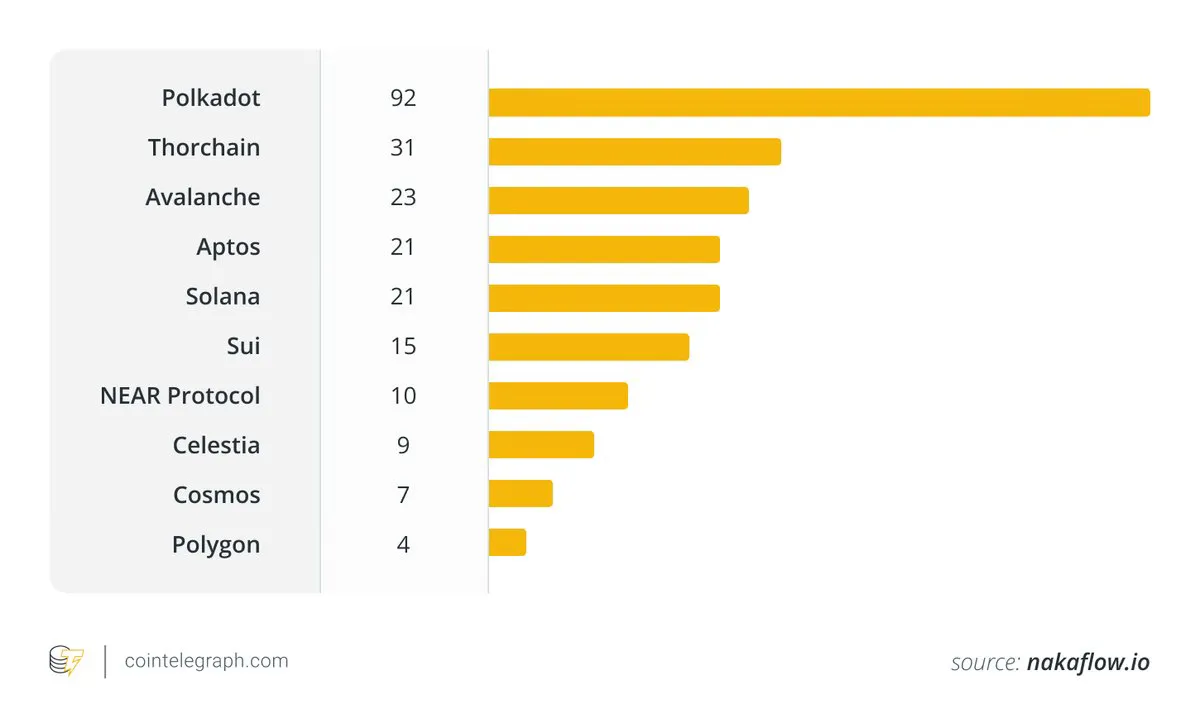
Another key indicator of decentralization is client diversity. Having multiple validator clients can reduce the risk of single points of failure, which is vital for the mature development of a blockchain. Currently, only Ethereum has achieved an ecosystem where multiple independent validator clients coexist. At this stage, Solana has only one validator client provided by Solana Labs (although Jito Labs' version is essentially a fork and not an independent implementation). However, two independent clients are in development: Firedancer by Jump Crypto and Sig by Syndica. Once these clients are officially launched, they will significantly enhance the degree of decentralization of the Solana network by eliminating reliance on a single codebase and introducing true client diversity.
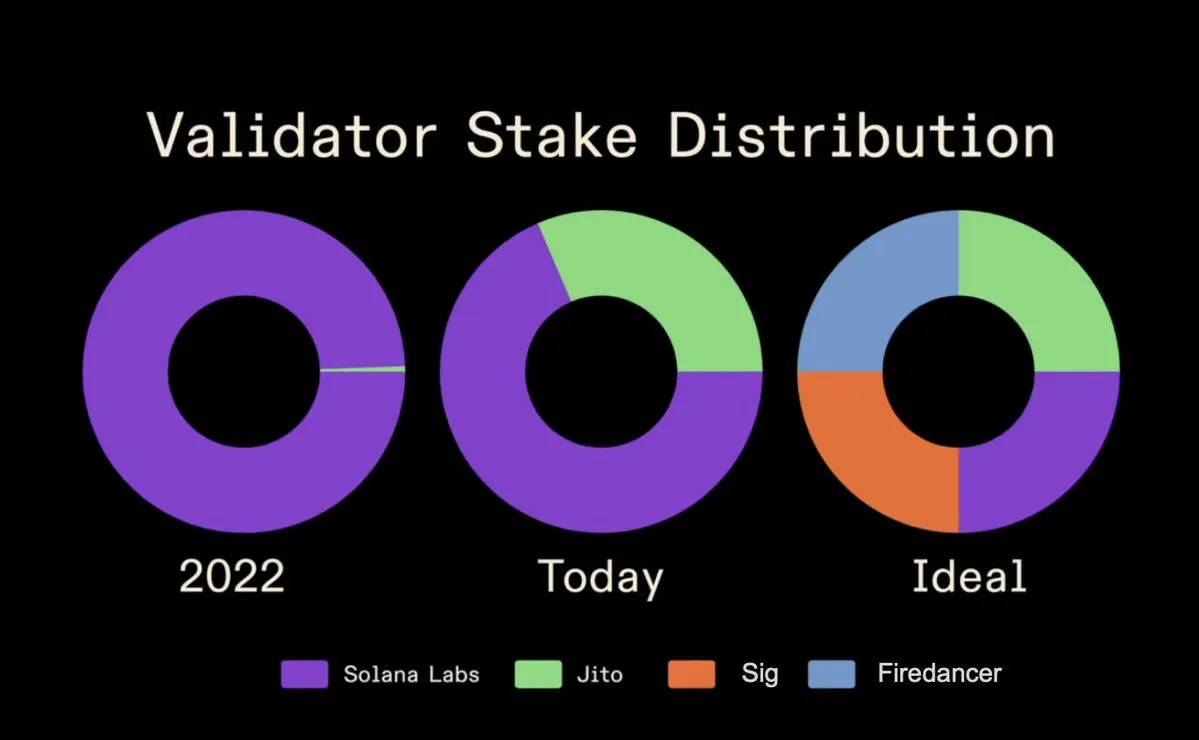
SOL Staking Market Cap
Recently, Solana surpassed Ethereum to become the blockchain with the highest staking market cap. On the surface, this indicates that Solana currently leads in economic security. This value will become particularly important after the mainnet activates the slashing mechanism.
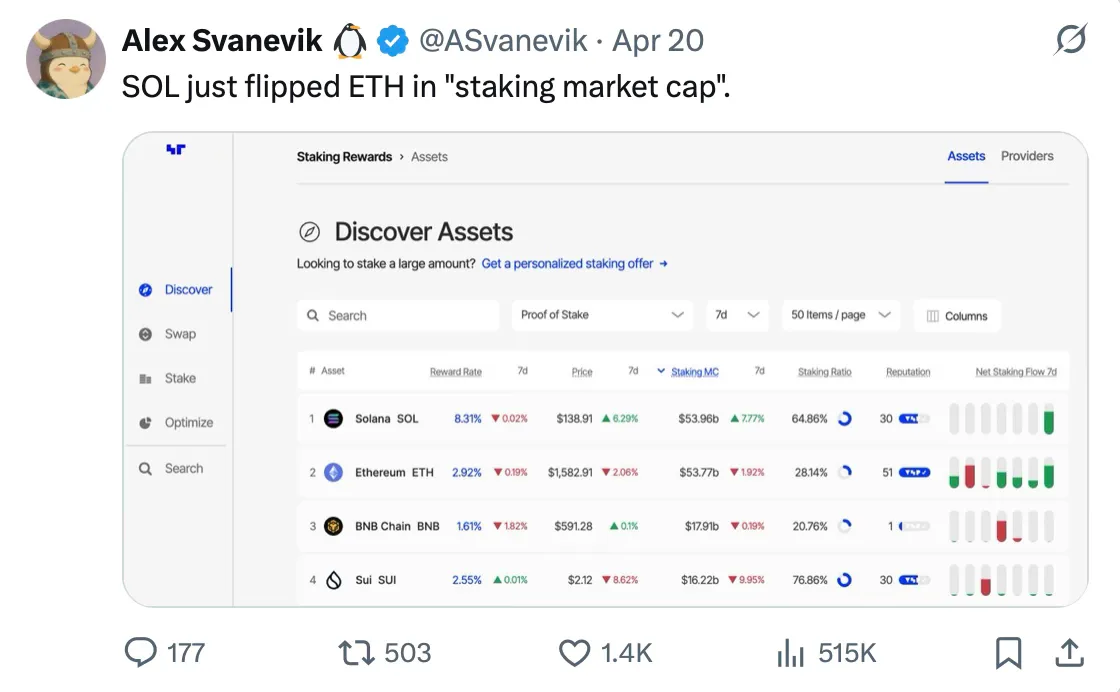
(PS: I know the topic of "economic security" is controversial and involves many simplifications, but for the purpose of this discussion, I will treat staking market cap as an effective metric.)
Developer Activity
Developer activity is another important metric to observe. Ultimately, it is the level of developer activity that shapes the future landscape of blockchain. The latest report from Electric Capital shows that Solana has become the preferred ecosystem for new developers in 2024.
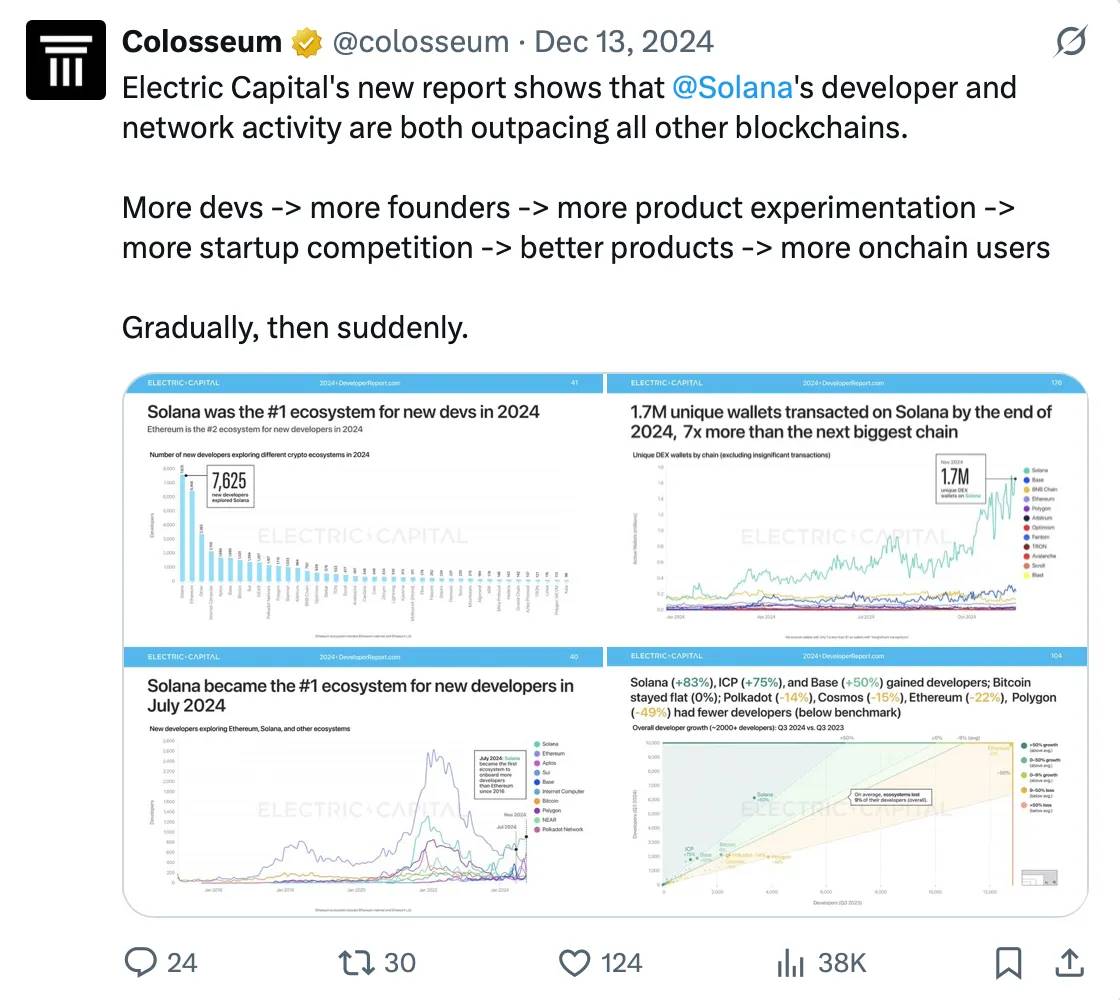
Equally important, new initiatives aimed at enhancing Solana's performance on the communication layer (such as DoubleZero) are continuously emerging, representing another important vertical to watch closely in the future.
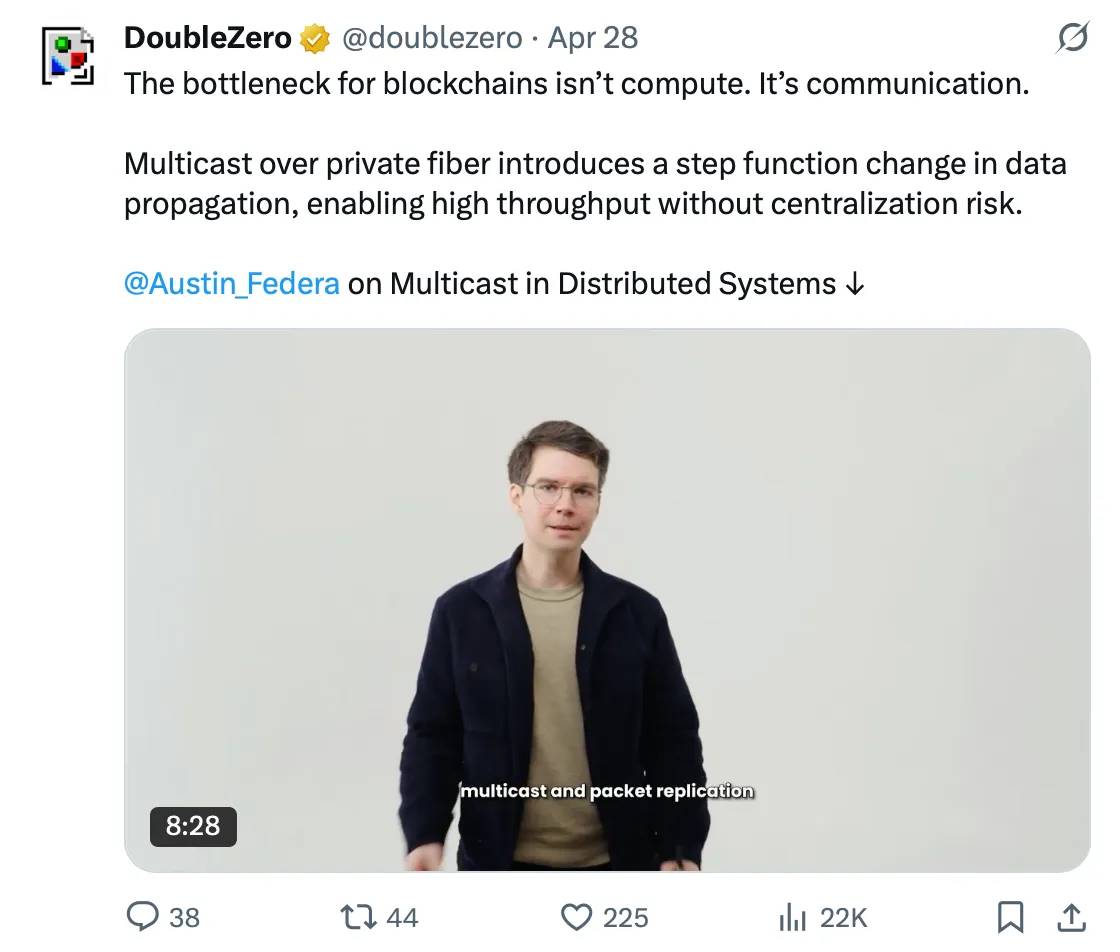
On-chain Activity
Since the beginning of 2024, on-chain activity has been on a significant long-term upward trend, with numerous new projects emerging and the DeFi ecosystem showing robust growth. This can be corroborated by various metrics.
TVL
TVL has risen from less than $1 billion at the end of 2023 to over $15 billion at the beginning of 2025, setting a new historical high. Although TVL has slightly retreated since then, it remains stable around $10 billion, demonstrating strong market resilience.
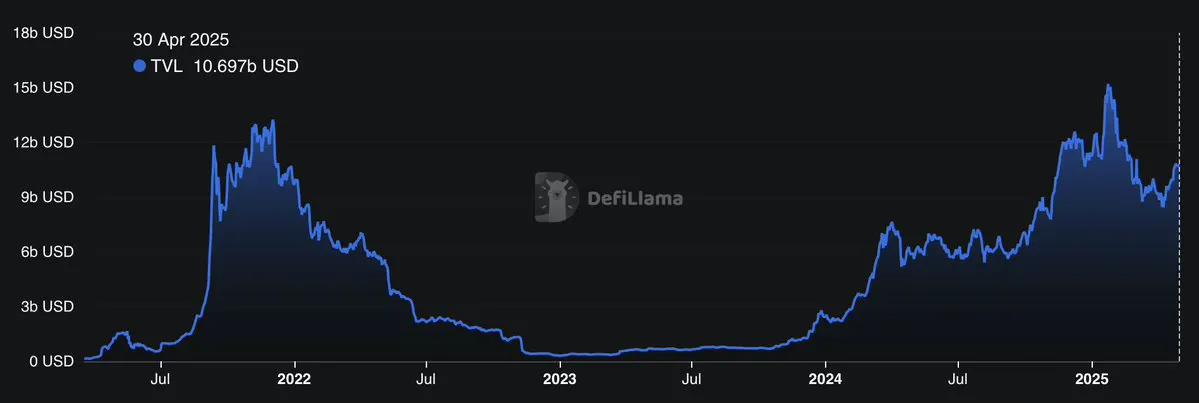
Stablecoin Market Cap
Solana has also seen a strong increase in stablecoin inflows over the past year. As of the time of writing, the stablecoin market cap on Solana has reached a historical high of $13.2 billion. This clearly indicates a continued growth in network adoption and trust.
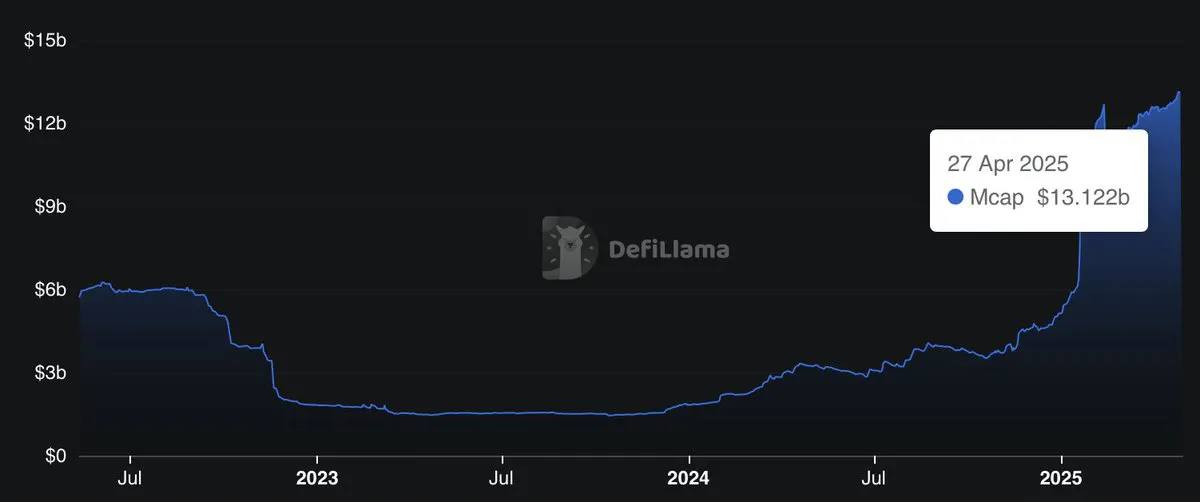
Transaction Fees
In terms of total fees from last year, Solana ranks as the third-largest L1 blockchain in transaction fees, with a very small gap compared to Ethereum, further confirming the high on-chain activity and strong market demand reflected by the network.
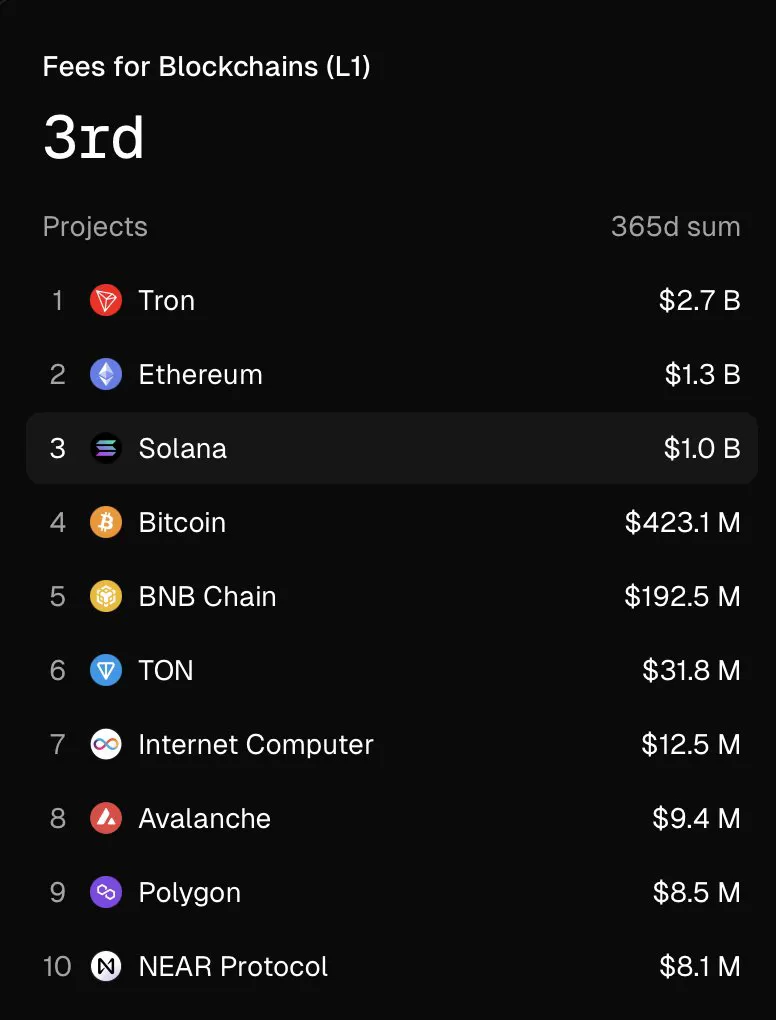
Ecosystem
The purpose of blockchain is to provide a foundation for the building and flourishing of applications. Detractors may argue that Solana's success is merely due to the frenzy of Pump.fun and Memecoins, but I believe this perspective overlooks a more important reason: Solana is the fastest-growing ecosystem in the entire crypto space, and its growth momentum increasingly comes from real application scenarios.
In fact, I think we can even assert that, in the long run, the meme coin frenzy occurring on the Solana blockchain is more beneficial than harmful. This phenomenon acts as a carrot, successfully getting the Phantom wallet into millions of smartphones worldwide. This approach effectively addresses the "cold start problem" that all emerging networks face, which is how to break through the bottleneck of the initial user base.
With the existing user base successfully onboarded, Solana is well-positioned to support more applications with real value and continue to drive its growth process.
DeFi Maturing
The DeFi ecosystem on Solana is maturing. As mentioned earlier, Solana is currently the second-largest Layer 1 blockchain by TVL and is one of the few public chains that can break through historical TVL peaks in 2025 while continuing the growth momentum from the previous cycle. This performance reflects both high user stickiness and its genuine market appeal.
The first wave of DeFi on Solana in 2021 was mainly experimental and driven by market speculation. Now, its growth appears more sustainable, with a more solid foundation and clearer market fit.
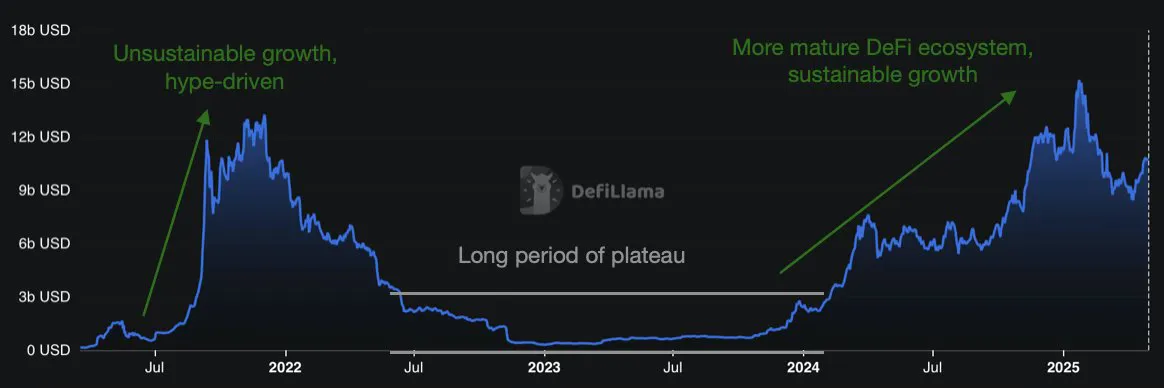
Notable protocols include Jito, Kamino, Marinade, Radium, and Jupiter.
To showcase Solana's development speed, the official account recently shared some updates for May on X:
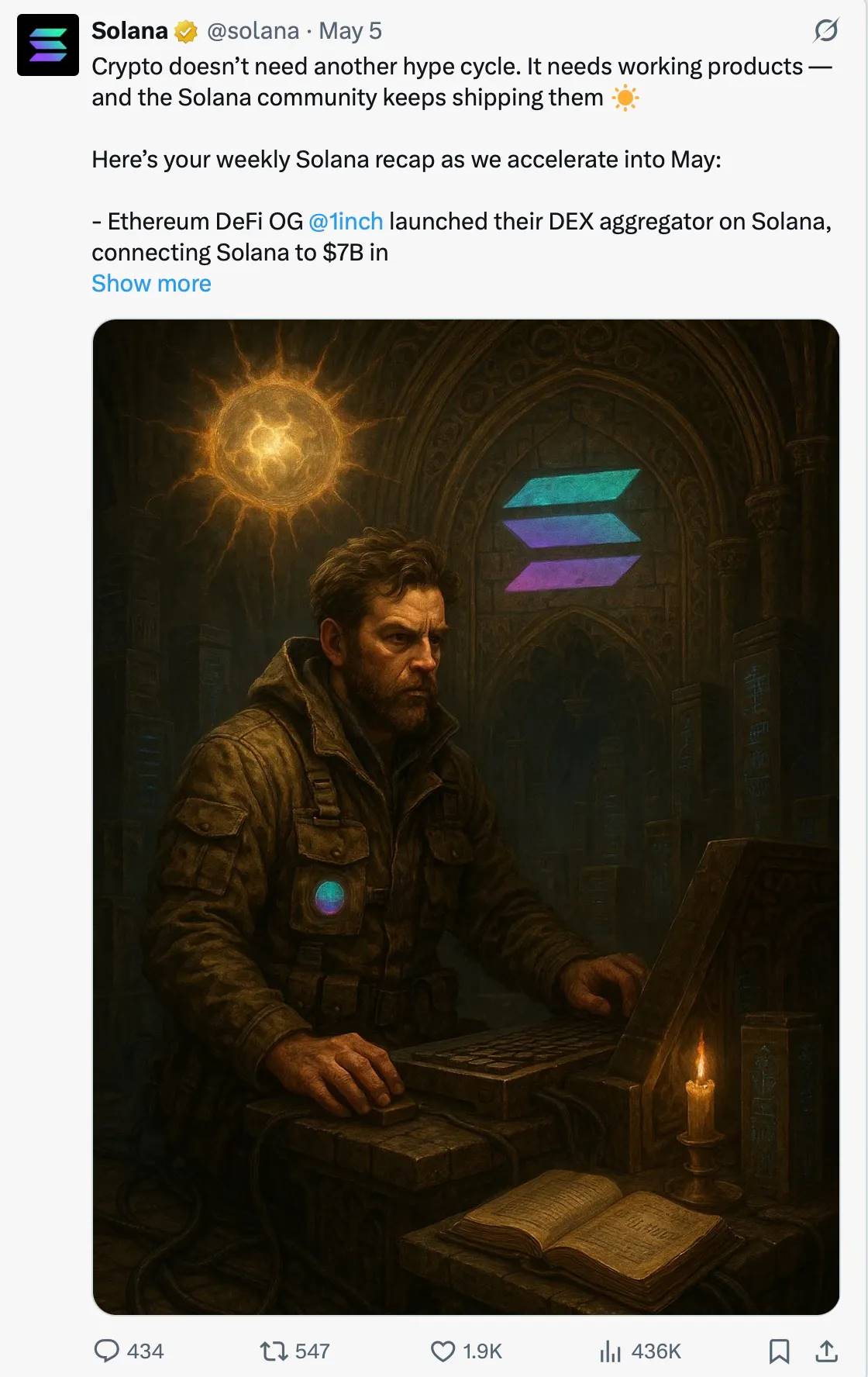
Additionally, we are witnessing a new wave of DeFi primitives emerging, with noteworthy mentions including:
Real yield platforms like RateX, Exponent Finance, Sandglass, or Pye Finance
Liquidity re-staking via Kyros
New stablecoin foundational protocols in collaboration with Perena, Global Dollar, or KAST Card
Yield aggregators like Lulo and Carrot
Oracles based on Switchboard
There are many similar examples.
Solana continues to attract existing protocols, with a recent example being 1inch, which has just launched its mainnet.
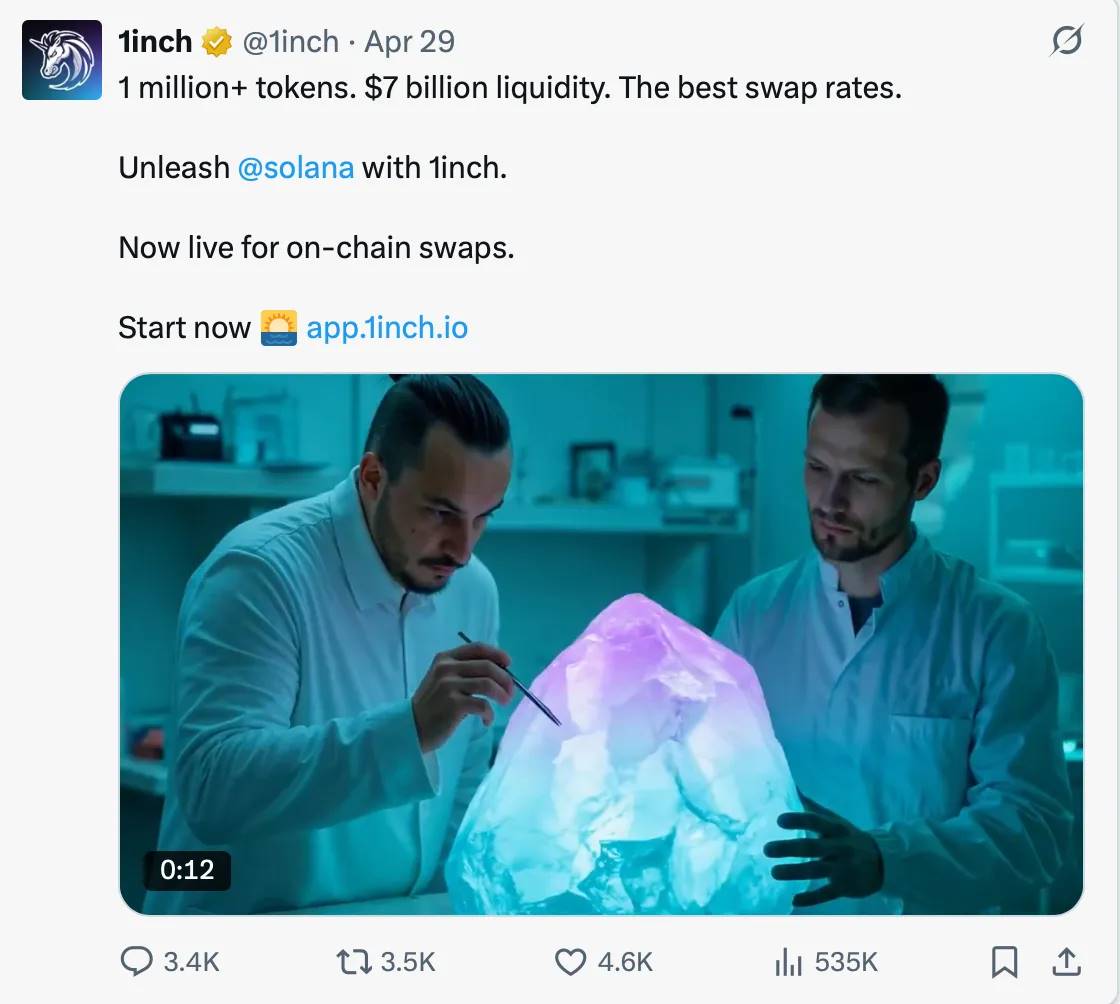
The Rise of DePIN
In addition to DeFi, we are also witnessing the rise of DePIN. According to Dune data, currently, 46.5% of the total market cap of DePIN is concentrated on the Solana blockchain, which has incubated top projects like Helium, Hivemapper, and Render.
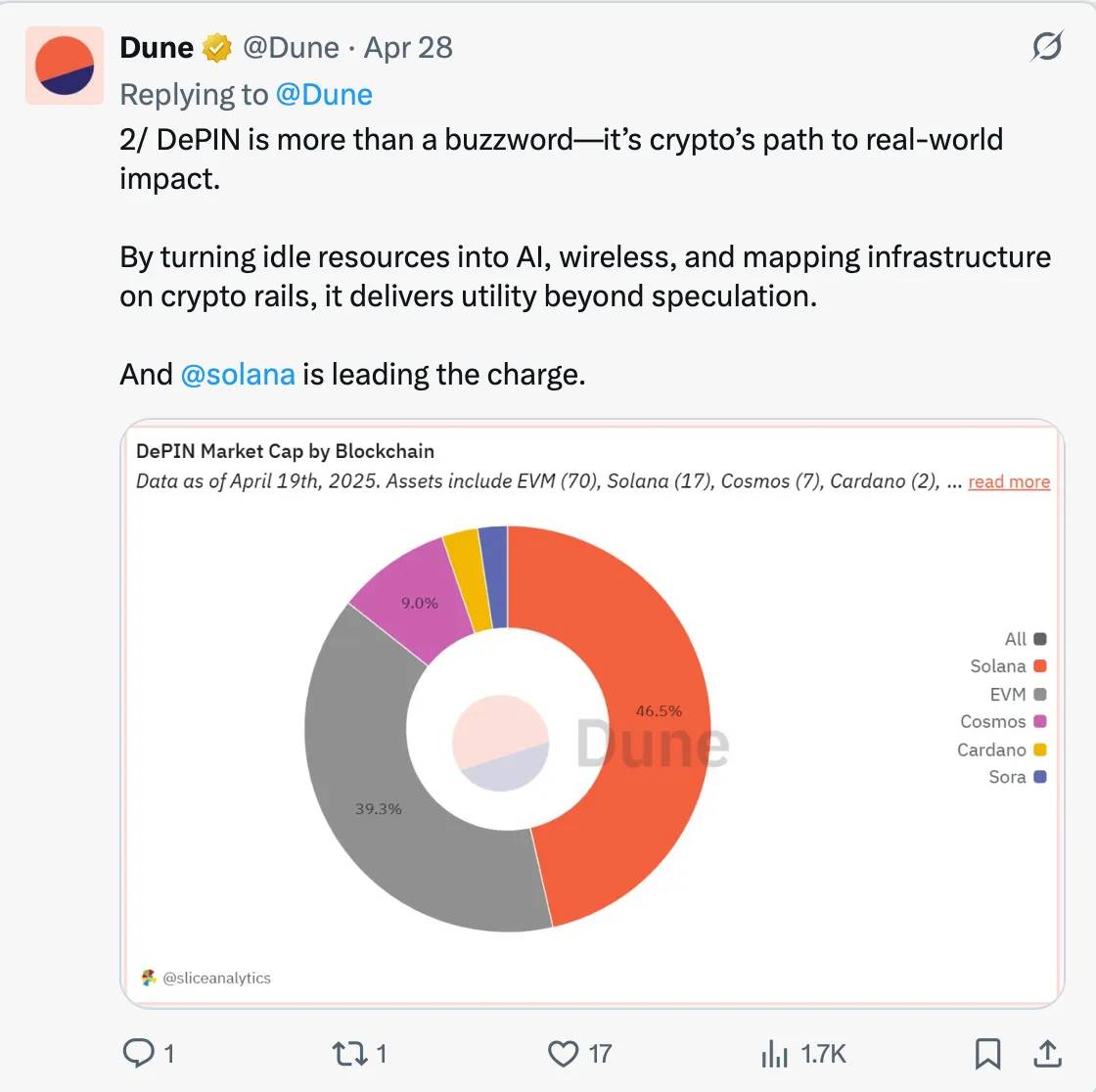
They have allocated over $400 million to participants in these projects, which is a substantial amount.
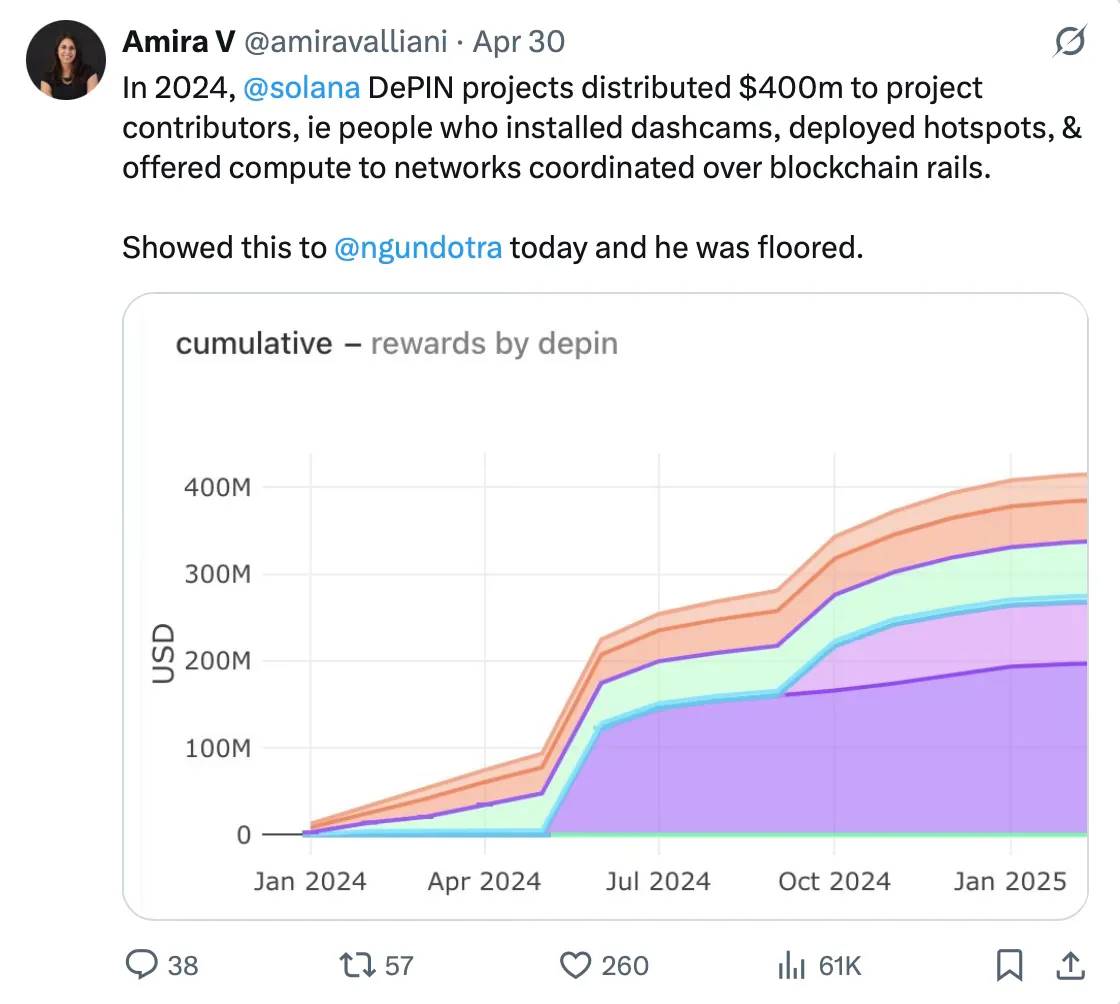
Breakthrough in Consumer Applications
Although we are still in the early stages of the crypto space, there is a strong momentum trying to penetrate the consumer application field. This is a challenging track that requires a lot of time and repeated experimentation to break through, but seeing talents like Nikita Bier join Solana as an advisor makes me optimistic.

Currently, crypto developers cannot find a more ideal platform than Solana. This blockchain network is attracting top talent and providing the most supportive initiatives: active ecosystem funds, intensive hackathon activities, and a strong developer culture, where the vitality of startups is genuinely flowing. Data also corroborates this prosperous trend: according to analysis by blogger Qw Qiao, Solana is about to surpass other platforms for the first time, becoming the blockchain ecosystem with the most Alliance founders.
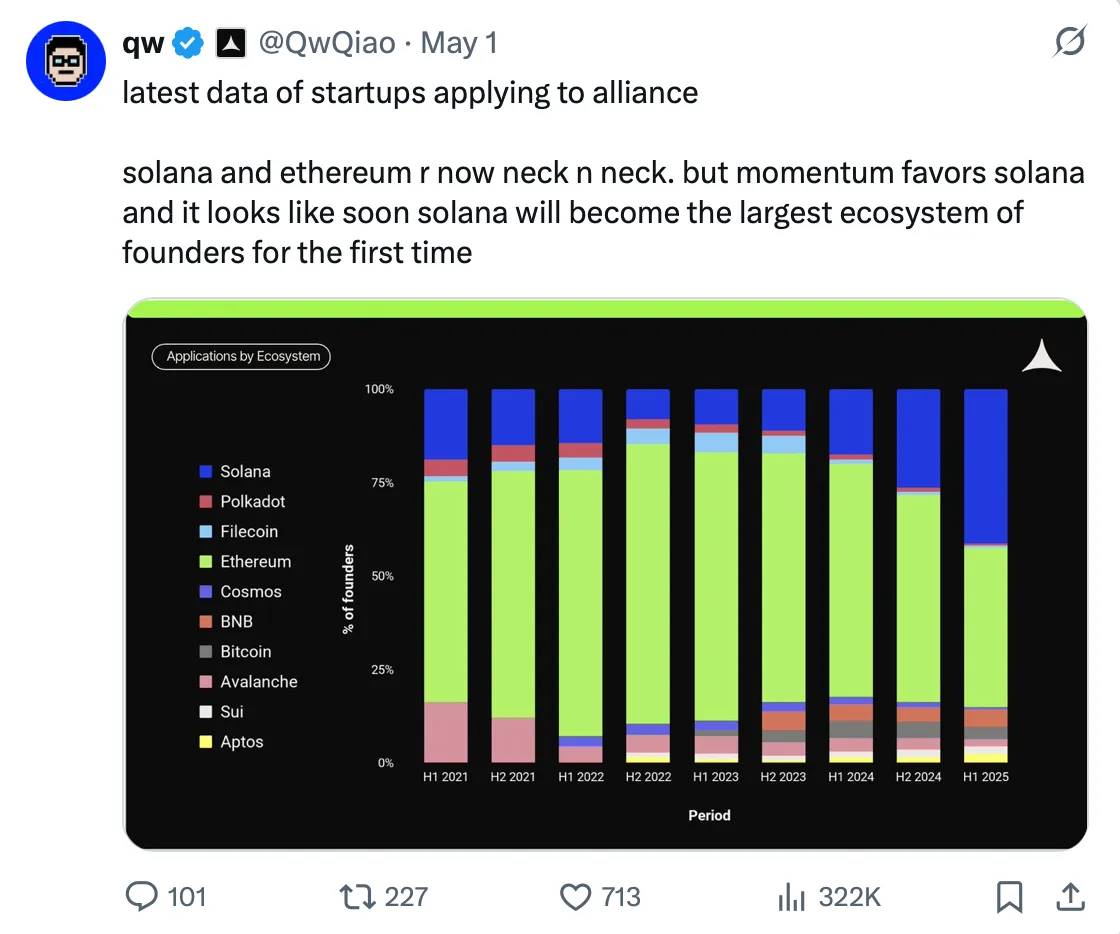
This leads me to believe that among many Layer 1 blockchains, Solana is the most likely to become the birthplace of breakthrough crypto consumer applications. If this scenario comes true, it will be a significant boon for the network. Future developments are worth close attention.
A Strong Community
So far, we have explored many metrics and tangible factors for evaluating the network. But I want to emphasize that Solana's greatest advantage is precisely its intangible asset: its community.
It is often said that communities that have experienced dark moments (like the FTX collapse) will eventually rise from the ashes and become more resilient, and I believe this is part of the story. Another key factor is the Superteam community, which excels in nurturing talent and maintaining development momentum, continuously injecting vitality into the ecosystem.
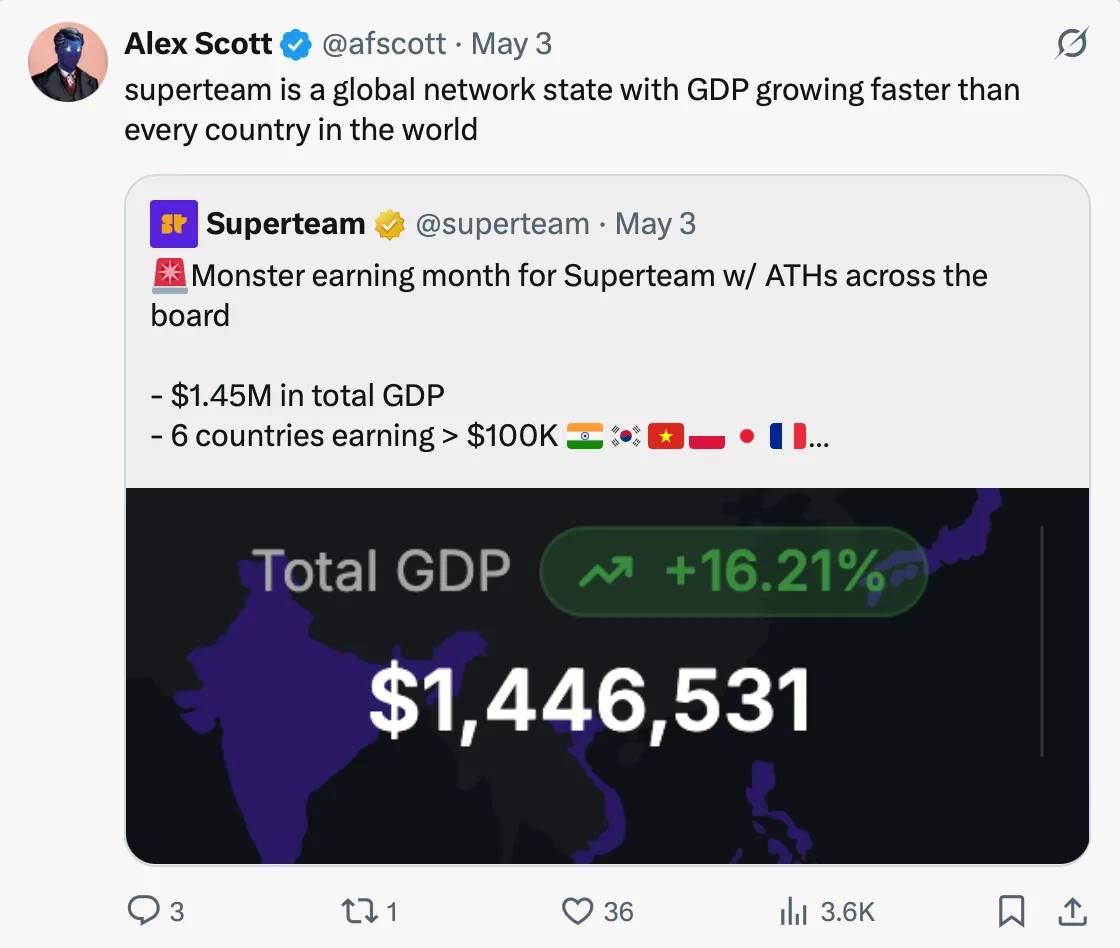
In my view, this is one of the secrets to Solana's success, and it is fundamentally irreplicable. No other blockchain project in the crypto space possesses this cultural depth.
Institutions Are Entering
Institutional interest in blockchain networks is also accelerating. A recent example is BlackRock's BUIDL fund, which has expanded its business to Solana after Ethereum. There are many similar cases, but I think this is enough to illustrate the point: traditional finance's confidence in on-chain infrastructure is continuously strengthening.

Moreover, Solana is likely to become the next crypto asset to receive approval for a spot ETF in the United States. According to current predictions on the Polymarket platform, the probability of approval in 2025 is 77%. The approval of the ETF will further recognize SOL as an investable asset while solidifying Solana's market position as a network with high trust and integrity. This regulatory recognition is expected to open up new participation channels for institutional and retail investors, attracting more incremental funds into the Solana ecosystem.
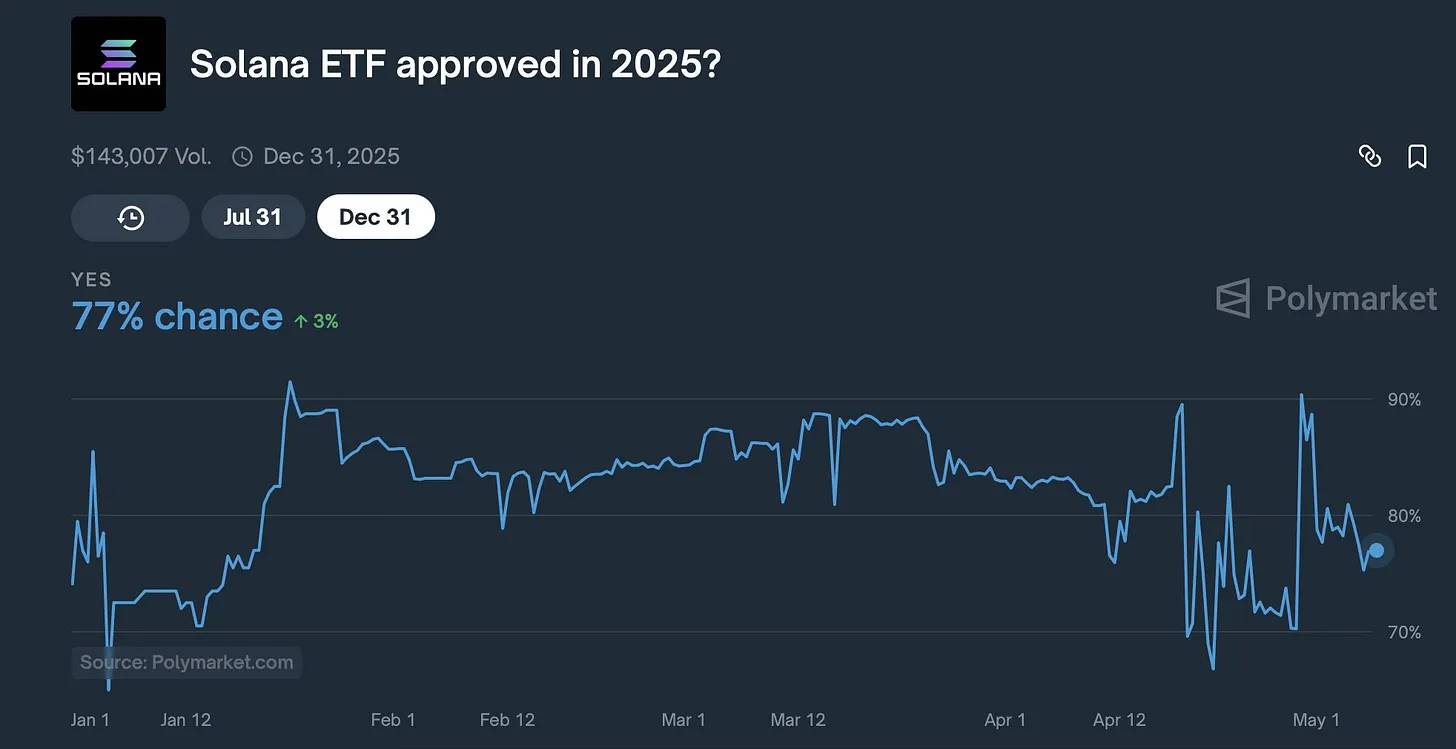
SOL Price Analysis
From a price trend perspective, SOL experienced its first hype wave between 2020 and 2021. However, like most emerging protocols, its infrastructure was not yet mature, and the ecosystem was still in its infancy. As the cryptocurrency market entered a bear market in 2022, this enthusiasm quickly faded. The impact of the FTX exchange collapse further exacerbated the situation, leading many to believe that Solana was a "dead project."
Unlike most protocols that struggled to recover, Solana made a stronger comeback. After about a year and a half of sideways consolidation, SOL broke through its price range for the first time, initiating the first surge of a new bull market. In fact, it has become one of the few Layer 1 protocols to set a new historical high since 2021, and this time it is backed by a real and robust ecosystem.
The current situation is that SOL has strongly rebounded to around $170 after plummeting nearly 67% from its historical peak in January. Although there may be some signs of overbought conditions in the short term, the medium to long-term outlook is highly explosive.
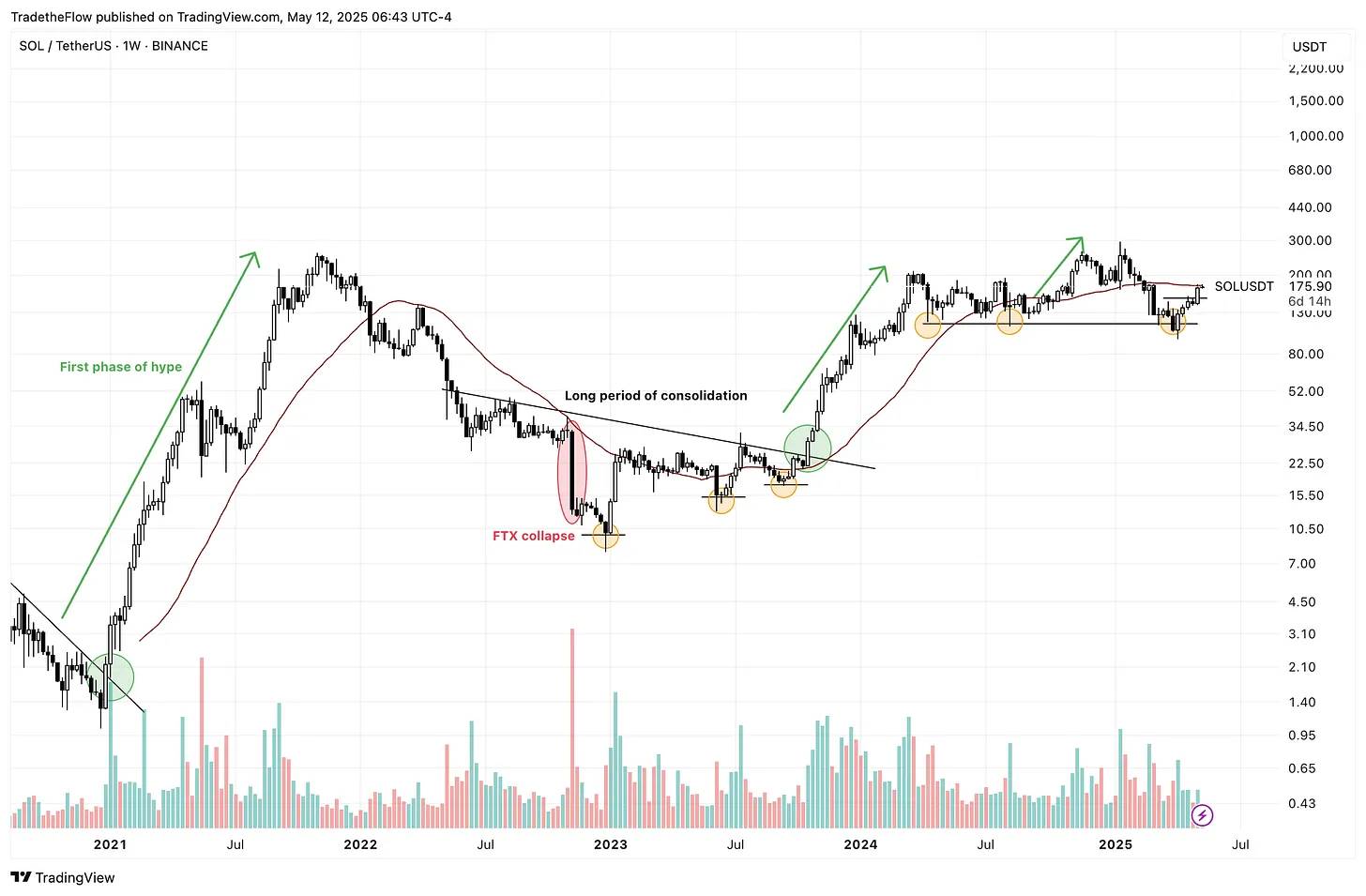
Among mainstream L1s, SOL also shows significant relative strength. The current SOL/ETH exchange rate has formed a clear upward trend and is approaching historical highs.
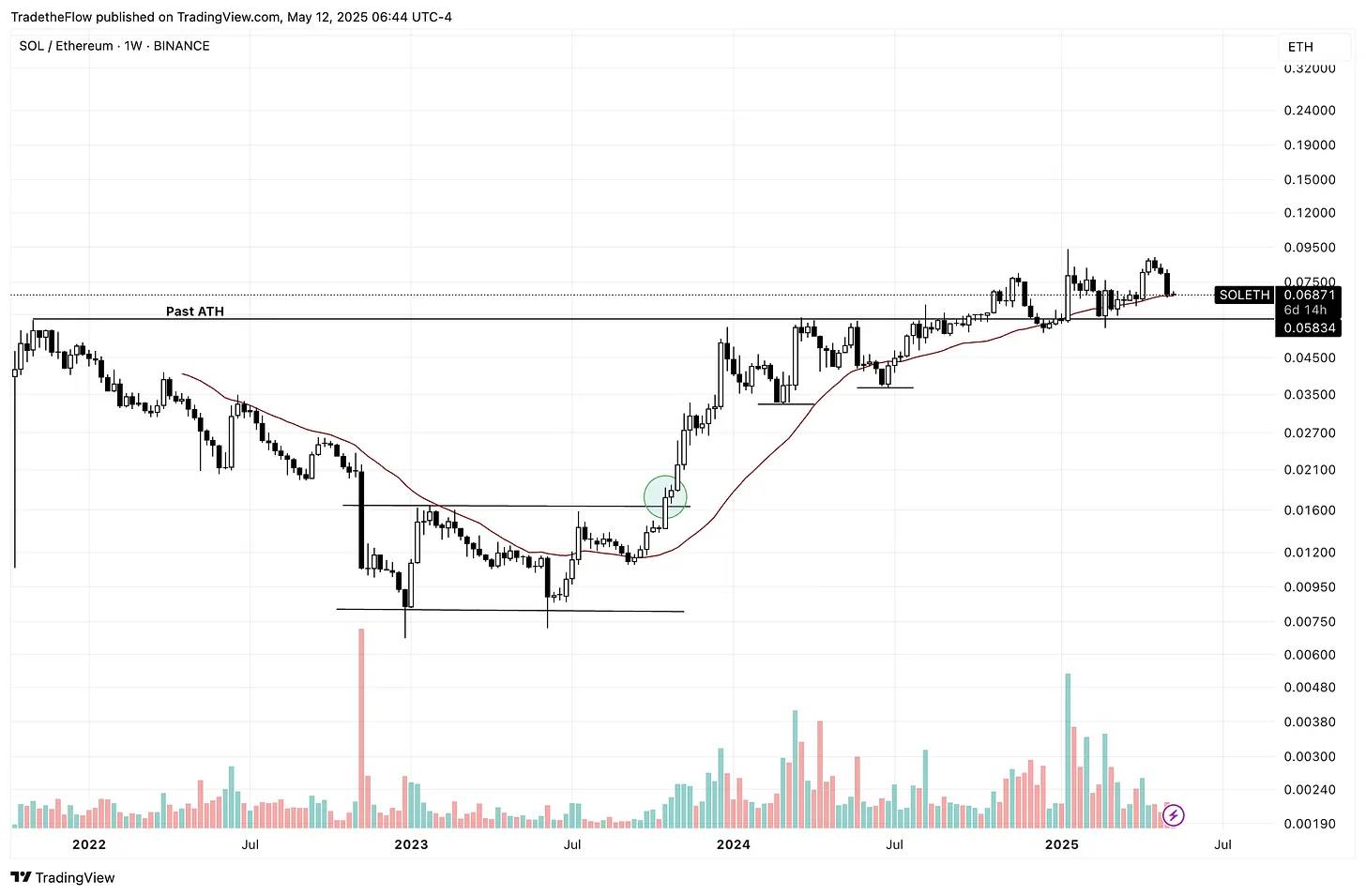
What’s Next?
Of course, we cannot predict where prices will go from here. Instead, what we can do is establish a framework to better assess investment opportunities from the perspective of risk and reward. A simple heuristic method I like to use is to compare the fundamental changes of an asset from a certain point A to another point B with its price changes.
Currently, what I see is that you can buy SOL at the same price the market was at during the frenzy of 2021. At that time, Solana was still just a dream, having not achieved product-market fit, and the DeFi ecosystem was just starting. Now, the network has a bright development outlook; it has become the fastest-growing blockchain in the cryptocurrency space, with real users, actual application scenarios, and increasing institutional interest.
Additionally, I believe the market structure is evolving, in which the underlying networks will continue to be the areas where most market value accumulates.

From this perspective, here are my thoughts:
As more applications and projects continue to develop on crypto networks, coupled with a friendly regulatory environment and rising adoption rates, the value of crypto networks will continue to grow. Ultimately, all global investors will want a piece of this pie.
Aside from Bitcoin, I believe Layer 1 blockchains will remain the core carriers of value accumulation (they are the operating systems of the crypto world).
Based on all the reasons we mentioned earlier, I believe Solana is in a very favorable position among Layer 1 blockchains.
Therefore, I am confident that for those who have been paying attention to cryptocurrencies for the long term, SOL remains one of the best investment opportunities.
Finally, I will leave you with this thought: most people are still underestimating Solana. Isn't that a good thing?
免责声明:本文章仅代表作者个人观点,不代表本平台的立场和观点。本文章仅供信息分享,不构成对任何人的任何投资建议。用户与作者之间的任何争议,与本平台无关。如网页中刊载的文章或图片涉及侵权,请提供相关的权利证明和身份证明发送邮件到support@aicoin.com,本平台相关工作人员将会进行核查。




